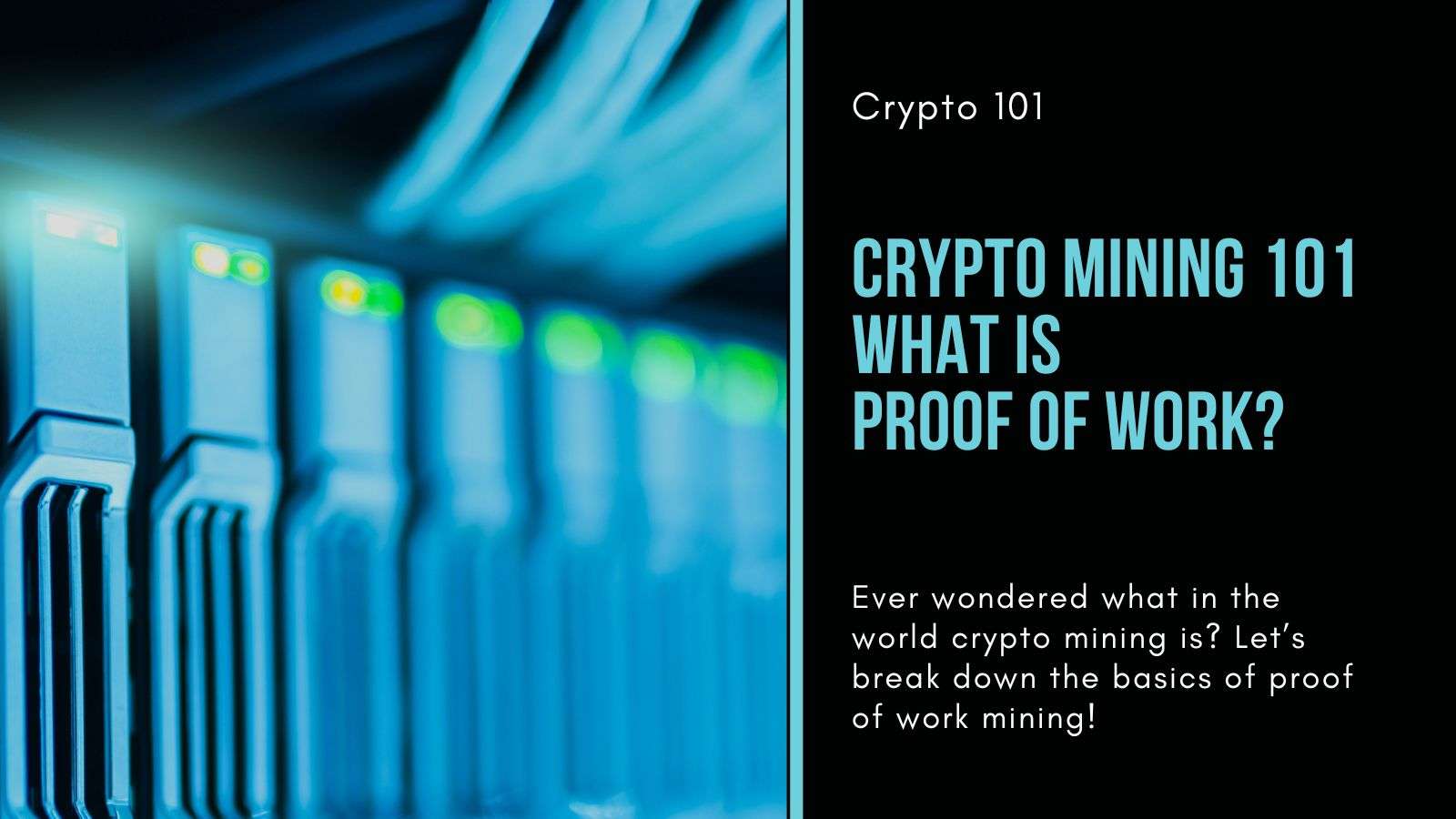Crypto Mining 101- What Is Proof of Work?

Cryptocurrency mining may seem like a complex subject, but fear not my friends! In this comprehensive guide, we’ll break down the basics of crypto mining, explore the differences between Proof of Work (PoW) and Proof of Stake (PoS), and take a look into various types and equipment used to mine, like ASIC, GPU, CPU, and hard drive mining. I have owned and ran all forms of mining rigs in the past, and was actually how I got into the space, so this all comes from experience.
What is Cryptocurrency Mining?
At its core, cryptocurrency mining is the process of validating and recording transactions on a blockchain network. Instead of relying on centralized authorities like banks, cryptocurrencies utilize decentralized networks of computers, known as miners, to verify and add transactions to the blockchain. Miners accomplish this by solving complex mathematical puzzles, ensuring the integrity and security of the network.
Now, why does solving these puzzles matter? Well, it all comes down to security. Think of the blockchain as a fortress protecting your digital money. Each puzzle solved by miners adds a new layer of security to this fortress. When a miner successfully solves a puzzle and adds a block of transactions to the blockchain, they’re essentially creating a unique fingerprint for that block. This fingerprint is incredibly difficult to replicate, making it virtually impossible for someone to tamper with the transactions or double-spend their coins, in other words making a counterfeit transaction. So, by continuously solving these puzzles and adding new blocks to the blockchain, miners strengthen the security of the entire network, ensuring that your digital assets remain safe and trustworthy.
Understanding Proof of Work vs. Proof of Stake
Proof of Work (PoW)
Proof of Work is a consensus mechanism used by many cryptocurrencies, including Bitcoin, Litecoin, Dogecoin, and Monero. In PoW, miners compete to solve complex mathematical puzzles using computational power. The first miner to solve the puzzle earns the right to add a new block of transactions to the blockchain and is rewarded with newly minted cryptocurrency coins. PoW requires substantial computing resources and energy consumption but is proven to be secure and reliable.
Think of it like this, you need big and expensive equipment and fuel to mine gold, if you really want to strike it big. Well, it works the same way for PoW networks like Bitcoin. You need a bunch of really expensive, power hungry rigs to really see any profit.
Proof of Stake (PoS)
So now, that you have an idea of what Proof of Work is, let me at least mention Proof of Stake so you can have an understanding of the difference. Proof of Stake is an alternative consensus mechanism in the cryptocurrency space. Instead of relying on computational power, PoS validators are chosen to validate transactions based on the number of coins they hold and are willing to “stake” as collateral.
Validators run servers that hold a copy of the blockchain and validate transactions and are rewarded with transaction fees and newly minted coins proportional to their stake in the network. PoS is more energy-efficient than PoW and encourages coin holders to participate in securing the network, but there are some big drawbacks like the centralization of stake. But this is a topic for a whole other post.
Different Crypto Mining Methods
ASIC Mining
ASIC (Application-Specific Integrated Circuit) mining involves specialized hardware designed specifically for mining certain cryptocurrencies. These devices are highly efficient at performing mining operations but are costly and have limited use beyond mining specific coins. These are usually really expensive machines that require a lot of power to run, noisy, and produce a lot of heat. Many newer ASIC miners require 240V power circuits which can be an expensive installation cost in some areas, or just not feasible at all if you are in say an apartment.
GPU Mining
GPU (Graphics Processing Unit) mining utilizes graphics cards in your home computer to perform mining operations. GPUs are more versatile than ASICs and can be used for various tasks beyond mining. While less efficient than ASICs, GPU mining offers greater accessibility and decentralization for networks that can be mined with GPUs. After Ethereum moved to Proof of Stake, this left a lot of miners looking to move their power to other networks like Ethereum Classic and others.
CPU Mining
CPU (Central Processing Unit) mining relies on the computer’s central processor to perform mining operations. This method is accessible to anyone with a standard computer and emphasizes decentralization, particularly in coins like Monero. This is my current method of mining because you can really put any machine to work. CPU mining isn’t always very profitable, but it’s more about putting your idle computer to work, securing blockchains, and earning some rewards while you sleep, eat, or just live life.
Hard Drive Mining
Hard drive mining is an honorable mention and utilizes storage space instead of computational power to validate transactions and secure the network. Miners store and retrieve data on their hard drives, earning rewards based on their storage capacity and activity. This approach offers an alternative to traditional proof-of-work mining and emphasizes energy efficiency. Chia Network is the current popular blockchain for hard drive mining. This can be a cheap and energy efficient way for you to mine at home and fulfill any hardware nerd-out needs you may have.
Conclusion
To wrap this up, cryptocurrency mining is a vital aspect of blockchain networks, ensuring the integrity and security of transactions. Whether using Proof of Work or Proof of Stake, miners play a crucial role in validating transactions and maintaining the decentralized nature of cryptocurrencies.
With various mining methods available, including ASIC, GPU, CPU, and hard drive mining, individuals can choose the approach that best suits their resources and objectives. As the cryptocurrency landscape continues to evolve, understanding these mining methods is essential for newcomers and seasoned enthusiasts alike. Who knows maybe you will be the one to build the next big mining farm!
Donate crypto today and help support or efforts here at Coin Logic!

Tip BTC to the following address
bc1q40lxx5uvev63g07z4w0kqfyknayhl2et74cth6






